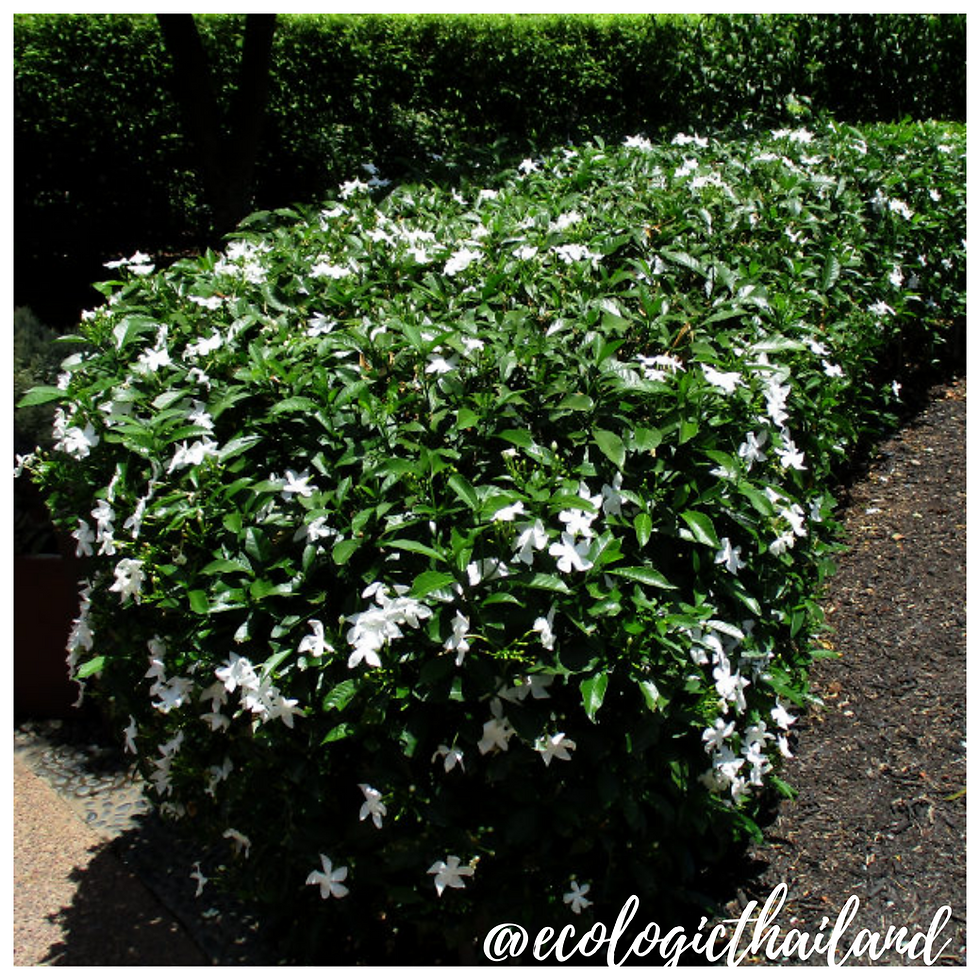Champak| Champaca
- Eco-Logic Resort
- Feb 1, 2021
- 2 min read
Champa | จำปา | Magnolia champaca
Family: Magnoliaceae - Genus: Magnolia

This tree with it's beautiful fragrant flower can be found on the premises of Eco-Logic Thailand.
Champaca or Champak is a large evergreen tree with a close tapering conical to cylindrical crown composed of ascending branches. It can grow 33 meters or more tall, with some specimens attaining 50 meters. It has a long straight bole that can be 18 - 21 meters long more and, under ordinary forest conditions, 80 - 120 centimeter cm in diameter.
The tree has a wide range of uses, being harvested locally as a source of food, medicines and a range of commodities. It is particularly valued for its essential oil and timber, and is sometimes cultivated for these. The tree is also used in reforestation projects.
Champaca is commonly cultivated as an ornamental and wayside tree throughout the tropics, being valued especially for its fragrant flowers, which are often used in religious ceremonies. It is also known as Golden Champa; Yellow Champa, Sonchaaphaa, Champa and Joy Perfume Tree.
Flowering period: January - February. Fruiting period: March - May

THE TREE
Magnolia champaca a tall, evergreen tree, usually up to 30 meter in height and 3.5 meter in girth, with a clean cylindrical bole up to 20 meter long, It is cultivated for its fragrant flowers and handsome foliage.
The bark of the tree is grey or brownish. The aromatic, bitter bark is sometimes used for the adulteration of cinnamon.

THE LEAVES
The leaves of the Champak tree are ovate to lanceolate, coriaceous.

THE FLOWERS
The most interesting part of the Chmpak tree are its flowers which are not very showy with few narrow yellowish white petals, but have an extremely heavy fragrance.
This fragrance has made Champa flowers very popular. Champa flowers are used to make the world's most expensive perfume 'Joy' in America.
Flowers of the Champak tree are usually axillary, solitary, yellow or orange .

THE FRUIT
The fruit of the Champak tree is 5-10 centimeter long; ripe carpels ovoid or ellipsoid, woody; seeds brown, angular, with pink fleshy aril.
CULINARY USES
The aromatic, bitter bark is sometimes used for the adulteration of cinnamon.
The fruit is said to be edible, but mainly eaten by animals.
TRADITIONAL MEDICINAL USE
NOTE: please take advice from a doctor if you are planning to use herbal medicine.
Bark, flowers and leaves of the Champak tree are said to be good for many ailments:
The bark is used as a febrifuge.
A decoction of the bark and leaves is given after childbirth.
The flowers are used to treat leprosy.
The leaves are used as a treatment against colic.
The seeds are used to treat badly chapped skin.
Fatty oils extracted from the seeds show antibacterial activity.
Antitoxic agent, expels worms and promoted the flow of urine.
Gives tone to the stomach, checks the over production of bile,
Removes phlegm, good remedy for cough and rheumatism.
Promotes menstrual flow and is a good laxative.
INTO THE WILD: a down to earth experience

For guests and visitors to Paksong we organize weekly tours "The Edible Forest" and Foraging weekends: Into the Wild. We work with local guides to take you in the jungle of Paksong. After foraging, we will cook a meal with the ingredients, using bamboo together with you!
Come and join and learn about the abundance of food that nature gives us!
INTO THE WILD!


















Comments